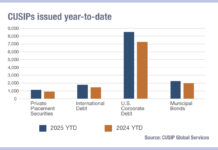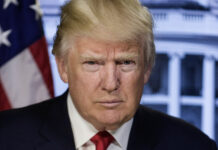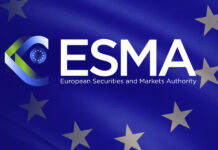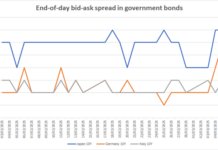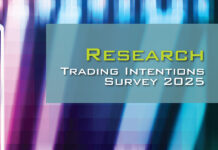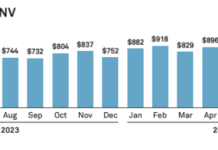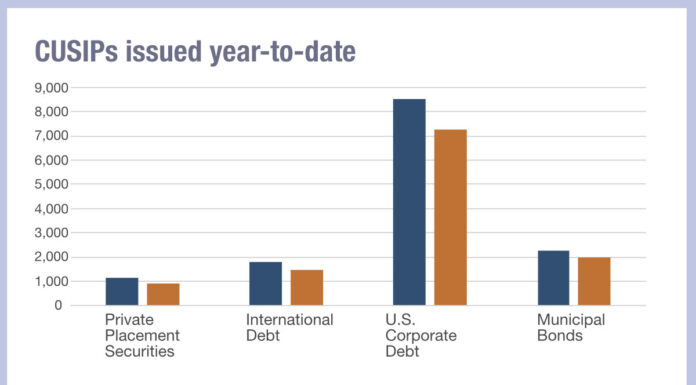The corporate bond market has stood up to the test of tariffs – but will the corporate environment? As earnings season kicks in, companies report on the effect that tariffs may have on revenues. This will be somewhat speculative, given the US administration’s need to constantly correct its own work.
“Since 2 April, 42% of earnings calls have included a discussion of tariffs, with 22% citing material risks,” reports S&P Global Market Intelligence. “Consensus revenue estimates for 40% of companies worldwide have now been revised lower and short interest is 46% higher. Credit spreads are off the 9 April high but remain ~20 bps higher than the pre 2 April baseline.”
The iBoxx US investment grade (IG) credit spread hit a peak on 8 April, the same week trading costs spiked in IG bid-ask spreads.
While administration members claim trade deals are possible, without defining any parameters that define success or identifying probability, following Japan’s walking away from the table in week of 21 April these comments appear entirely speculative.
“[We] reduced our overall US exposure, anticipating an inevitable outflow of capital from the US, whose market capitalisation accounted for almost 70% of the global stock markets’ value at the beginning of the year,” wrote Edourd Carmignac, chief investment officer and chairman at Carmignac Gestion, to clients. “[T]he advent of a new world order will generate many attractive opportunities for us to seize.”
Based on the potential threat to corporate debt quality, outlined by S&P Global Market Intelligence’s implied worsening of credit conditions, buy-side desks will need to consider how they can support portfolio managers as they manoeuvre to reduce risk and to seize opportunities.
There are indications that corporate bond trading will continue to function well, for desks with the right pre-trade inputs and liquidity management tools.
Firstly, liquidity providers have been effective in supporting market making during the period of greatest uncertainty so far. Volumes jumped, then fell, and the cost of trading increased, but there were no 2020-style bidless Treasury markets.
Buy-side traders have reported solid support from banks and electronic liquidity providers, with no breaks in trading and continuous activity. They are keen to know if this will continue.
Should the costs of carrying trades increase, due to a worsening risk profile for certain traches of debt ratings, there is certainly the potential for market makers to step back from supporting liquidity in those bonds to some extent.
However, engagement on electronic trading platforms has been strong year-to-date with Tradeweb seeing rates derivatives trading volume up by 49%, cash credit up 14%, credit derivatives up 66%, with US IG credit volumes up 25% while US HY credit were up 44% year-on-year.
Secondly, the improvements in useable data are delivering greater support for buy-side engagement with counterrpartiess at the right times, using the right trading protocols, which is helping to minimise trading costs at a point where portfolios are being rebalanced to Carmignac’s point.
Finally, e-trading platforms are allowing traders to reach into geographies that they might otherwise struggle with to find liquidity, manufacture liquidity and execute effectively.
The market is holding steady, even as the economics appear rocky.
©Markets Media Europe 2025

